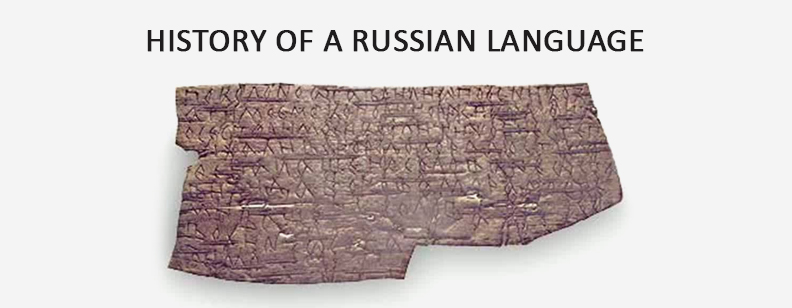Russian is a Slavic language of the Indo-European family. It is spoken primarily in Russia, Belarus, Ukraine, Kazakhstan, and Kyrgyzstan. It is a lineal descendant of the language used in Kievan Rus. Just like English or any other major language, Russian has been developed a very long time. Here we will give a brief overview of the origin of Russian as well as summarize some of the major areas of change in the history of the Russian language.
Both the formation and transmission of language need to through a lengthy process and it owns obvious ethnic identity. So referring to the origin of Russian language, we have to discuss it from the aspect of Russian nation.
Sometime around 3500 to 2500 BC the people who spoke the language known as Indo-European began gradually to form dialect communities and separate from each other. As the Indo-European tribes moved to the West and to the East, the Slavic tribes became separated from the mass of other tribes and developed their own language, which is called Common-Slavonic or Proto-Slavonic.
Read Also: Difference between English and Russian Language
These tribes settled in the heart of present-day Eastern Europe and continued to use mutually intelligible dialectal forms for centuries. Up to the 14th century, ancestors of the modern Russians spoke dialects of the Old East Slavic language, related to the dialects of other East Slavs.
This spoken tongue and the literary Old Church Slavonic language operated throughout Kievan Rus. The earliest written record of the language, an amphora found at Gnezdovo, may date from the mid-10th century.
The Russian language emerged between 880 AD through the 14th century AD out of a group of related dialects that were prominent in the area at the time and collectively referred to as Old East Slavic. During this time, the main languages that influenced the development of Russian were Gothic, Old Norse, Old Church Slavonic, and Byzantine Greek.
During the pre-Kievan period, the main sources of borrowings were Germanic languages, particularly Gothic and Old Norse. In the Kievan period, however, loanwords and calques entered the vernacular primarily from Old Church Slavonic and from Byzantine Greek.
From the late 14th century to the end of the 18th century, the official language was a form of Church Slavonic, with vocabulary borrowed from Polish, German, and other Western European languages. In the late 14th century, both the political centre and the predominant dialect in European Russia came to be based in Moscow.
The official language in Russia remained a kind of Church Slavonic until the close of the 18th century. The 18th century political reforms of Peter the Great were accompanied by a reform of the alphabet, and achieved their goal of secularization and modernization. Vocabulary that is more specialized was borrowed from other languages, including Dutch, Latin, French, and German.
Are you looking for Russian Translation? We are here for your assistance.
During the 19th century, the standard language assumed its modern form; literature flourished. Modern Standard Russian, also known as the Modern Russian Literary Language, is considered to have begun with Peter the Great, and then further developed through a combination of Alexander Pushkin’s literature and the spelling reform of 1918. Pushkin’s writings tossed aside the old archaic literary styles in favor of the vocabulary and grammar common in the spoken language at the time.
The political upheavals of the early 20th century and the wholesale changes of political ideology gave written Russian its modern appearance after the spelling reform of 1918.Russian today is a tongue in great flux. The new words entering the language and the emerging new styles of expression have, naturally, not been received with universal appreciation.
However, with over 160 million native speakers, and more than 285 million total speakers, Russian is ranked as the eighth most widely spoken native language and as the fifth most spoken language when ranked by total number of speakers and that made Russian language more and more popular across the globe.
Take a look at how we helped our client by localizing their project for Russian language. Click here to read the complete case study



